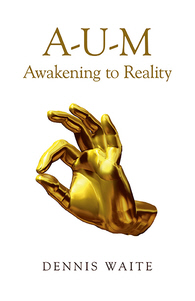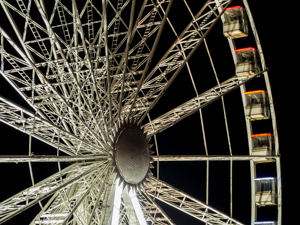 Here is the second extract from my forthcoming book on the Mandukya Upanishad and Gaudapada’s kArikA-s. It explains the symbolism associated with the cover image. This explanation occurs near the end of the book, since it utilizes concepts with which the reader might be unfamiliar (until he or she has read the book). But since readers of this site should certainly be familiar with the terms, there is no harm in presenting it here!
Here is the second extract from my forthcoming book on the Mandukya Upanishad and Gaudapada’s kArikA-s. It explains the symbolism associated with the cover image. This explanation occurs near the end of the book, since it utilizes concepts with which the reader might be unfamiliar (until he or she has read the book). But since readers of this site should certainly be familiar with the terms, there is no harm in presenting it here!
chin mudrA
Now that we have almost concluded the unfolding of the kArikA-s, we can return to that cover image! The ‘hand-sign’ is not actually mentioned in the Mandukya Upanishad, nor by Gaudapada, though it is highly relevant. As I mentioned in the introduction, it is a gesture associated with the Sage who is said to be the first teacher of Vedanta – Dakshinamurti. As such, he was the head of the teaching sampradAya and did not himself have a teacher – i.e. he was already fully enlightened. He is also identified with the God Shiva. It is called chin mudrA or j~nAna mudrA (more usually chin), where chin means Consciousness and mudrA means sign.
It is often said that Dakshinamurti taught through silence. Of course, this would not make any sense. Silence can be interpreted in innumerable ways, few of which are likely to convey useful knowledge! But, once we have the knowledge, a symbol can convey a world of information, reminding us through memory of what we have previously learned. Witness the vast amount of knowledge which is now conveyed to you through the word OM.
The hand position shown on the cover of this book is another symbol of this sort. And it is highly relevant to the same knowledge.
Here is the symbolism:
- The thumb represents paramAtman. There is some reasoning behind this. The scriptures speak of paramAtman as residing in the space in the heart (hRRidaya). By this, we were expected to understand ‘mind’, since it used to be thought that the mind was contained in the physical organ of the heart. Since the heart is about the size of a fist, it was reasonable to think that the space inside was about the size of a thumb.
- The forefinger represents the individual or jIva. It could also be thought of as the ego or sense of myself. It is common in many cultures to use the forefinger to point out personal opinions and also to threaten or criticize others whose views differ from ‘mine’.
- The second finger represents the gross body, sthUla sharIra or waker.
- The third finger represents the subtle body, sUkShma sharIra or dreamer.
- The fourth finger represents the causal body, kAraNa sharIra or deep-sleeper.
- The first finger is normally held in association with the other three, indicating our identification with the body and mind.
- All four fingers depend upon the thumb for their strength and ability to do practically anything. It is this feature which distinguishes us from other animals and gave humanity its great advantage in manipulating objects.
- When the index finger is moved to touch the tip of the thumb, it separates from the other three, indicating realization that I am not in fact these bodies at all. In forming an unbroken circle with the thumb, it is recognizing that jIvAtman and paramAtman are one, unaffected by the three mithyA states of consciousness.
I now have a firm publication date for the book, incidentally – it is September 25th. It is now available for pre-order. It is quite expensive, but then it also quite thick (431 pages).
The paperback details are: ISBN 978-1-78279-996-2 UK: £20.99 US: $36.95
and the EBook: ISBN 978-1-78279-997-9 UK: £12.99 US: $21.99
Buy from Amazon US; Buy from Amazon UK
The first extract from the book may be read here.





